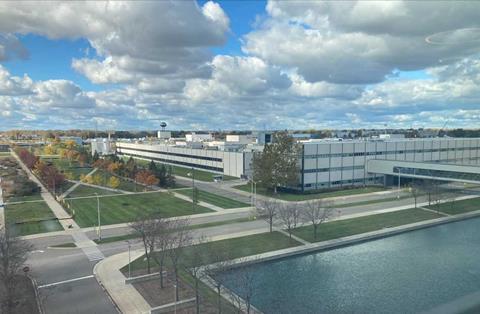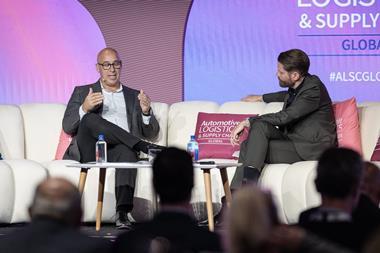At this week’s General Motors 2024 Investor Day, Kurt Kelty vice-president of battery cell and pack, outlined the carmaker’s new direction on EV battery development. That includes a new battery cell development centre in Warren, Michigan which will open in 2027, and a new battery development roadmap that will move GM beyond the Ultium Cells common battery module.

Kelty said the conditions are now in place for North America to seize EV battery leadership from China and commercialise the home-grown battery technologies that were previously commercialised by Asian companies thanks to what Kelty identified as low labour costs, comprehensive public sector subsidies, local material supply and local market demand for the product.
“It’s a simple and pragmatic reality that development of any new technology benefits greatly from proximity to customers,” said Kelty. “Today, the US has the customer base.”
As part of that effort to seize EV battery leadership, GM is building a new battery cell development facility at its Global Tech Center in Warren, Michigan. GM said the Wallace Battery Cell Innovation Center, will significantly expand the company’s battery technology operations and accelerate development and commercialisation of longer range, more affordable EV batteries. Kelty said that by adding production capability during battery cell development, GM will be able to more quickly streamline processes, understand costs and identify potential production issues.
“This increased capability can help us close the learning gap between cell development and mass production, while reducing development times by up to a year from concept to launch of new battery technology,” said Kelty.
GM will produce its first cells at the new facility in early 2027 and share its production knowledge with manufacturing partners, which it said would accelerate their ability to provide production cells to GM.
Kelty said that GM has aligned a new battery roadmap around four key goals: enhancing battery pack safety; battery cell cost leadership in North America; expansion of local battery production; and improvements in fast charge and energy density.
To do that Kelty said GM had to move beyond the status quo and that included ending its “one size fits all” Ultium Cells programme, focused on one common module for a purpose-built EV architecture.
“[The Ultium] strategy gave us flexibility in a common module used on everything from the Equinox EV to the Escalade IQ,” noted Kelty. “Without this common building block, we couldn’t have launched the wide range of all new EV models that we have to date. Having established a strong presence in the EV market across categories and prices, we can now take the next step on a journey with sufficient volume and key segments.”
Kelty said that GM now has even more cell form factors and chemistries to choose from that will enable it to create greater value for its customers. Kelty said the future GM battery roadmap will include high nickel, mid nickel and LFP cathodes.
“We use mid-nickel and high-nickel cathodes for our premium high performance and longest range options,” said Kelty. “We will expand the use of LFP [lithium iron phosphate] in our portfolio, including in North America, in models where we can achieve outstanding range at a lower cost.”
However, Ultium will continue to be used in reference to GM’s joint venture manufacturing sites and other facilities, such as with LG for the development of plants in Michigan, Ohio and Tennessee.
Kelty, who is a battery expert and former Tesla executive, was hired by GM in February this year to lead GM’s end-to-end battery cell strategy. The carmaker is looking at sourcing raw materials, research, developing and investing in new technology, commercialisation of cells and packs, and end-of-life battery reuse.

























![Global[1]](https://d3n5uof8vony13.cloudfront.net/Pictures/web/a/d/s/global1_726550.svgz)
















No comments yet